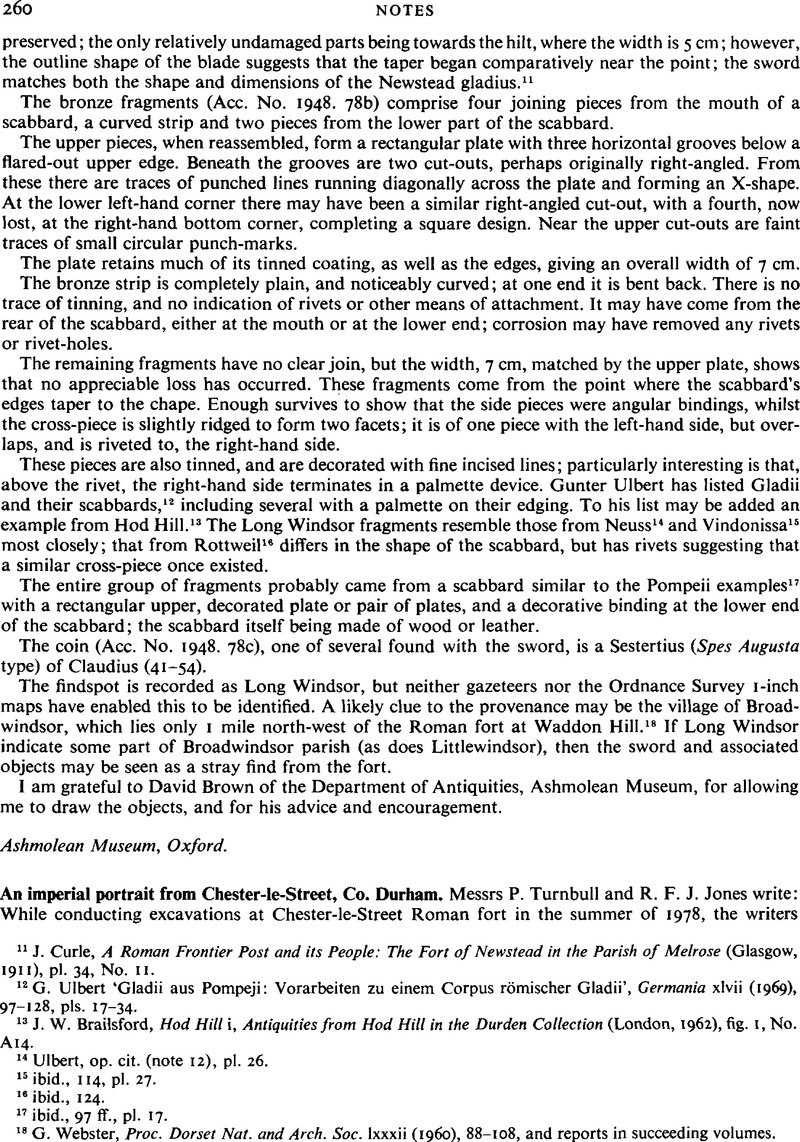No CrossRef data available.
Article contents
An imperial portrait from Chester-le-Street, Co. Durham
Published online by Cambridge University Press: 09 November 2011
Abstract

- Type
- Notes
- Information
- Copyright
- Copyright © P. Turnbull and R. F. J. Jones 1979. Exclusive Licence to Publish: The Society for the Promotion of Roman Studies
References
19 On behalf of the Dept. of the Environment, Chester-le-Street District Council and the Bowes Museum. For a report on the 1978 excavations, see below p. 285. For earlier work on the fort see Arch. Ael. 4th series, xlvi (1968), 84 f.Google Scholar; xlix (1971), 101 f. We are grateful to the Rector of Chester-le-Street, Rev. Ian Bunting, for allowing access to the head and for encouraging this publication. We have discussed the head with several friends and colleagues, including T. F. C. Blagg, Amanda Claridge, M. Henig, M. W. C. Hassall, Prof E. Birley and Prof J. J. Wilkes, and have benefited from their opinions. Professor Jocelyn Toynbee kindly read a draft of this note and made many helpful suggestions. We are also grateful to S. Dockrill of Bradford University for his help with the photographs.
20 It is hoped that the collection will soon be made into a small museum in the church. We plan to report on the remaining Roman items in the publication of our excavation, now in preparation. They include the head of a Celtic god, a relief showing a genius standing on an anvil, and a pine-cone finial.
21 J. M. C. Toynbee, Art in Britain under the Romans (1964), 45.
22 ibid., 106–7 and PI. XXVIIIa; Phillips, E. J., Corpus Signorum Imperil Romani: Great Britain, vol. 1, fasc. 1 (1977), no. 232.Google Scholar
23 ibid., no. 119.


